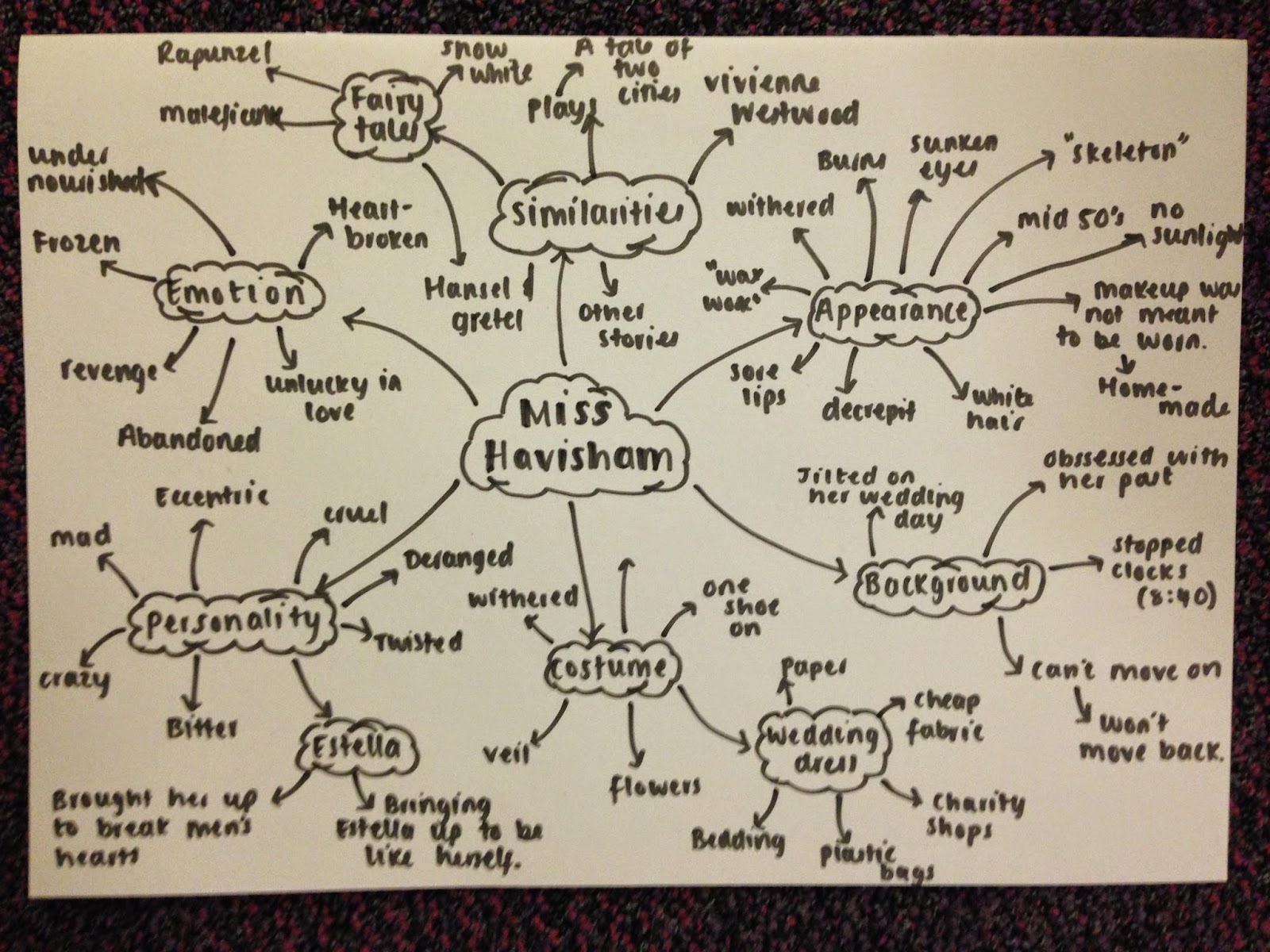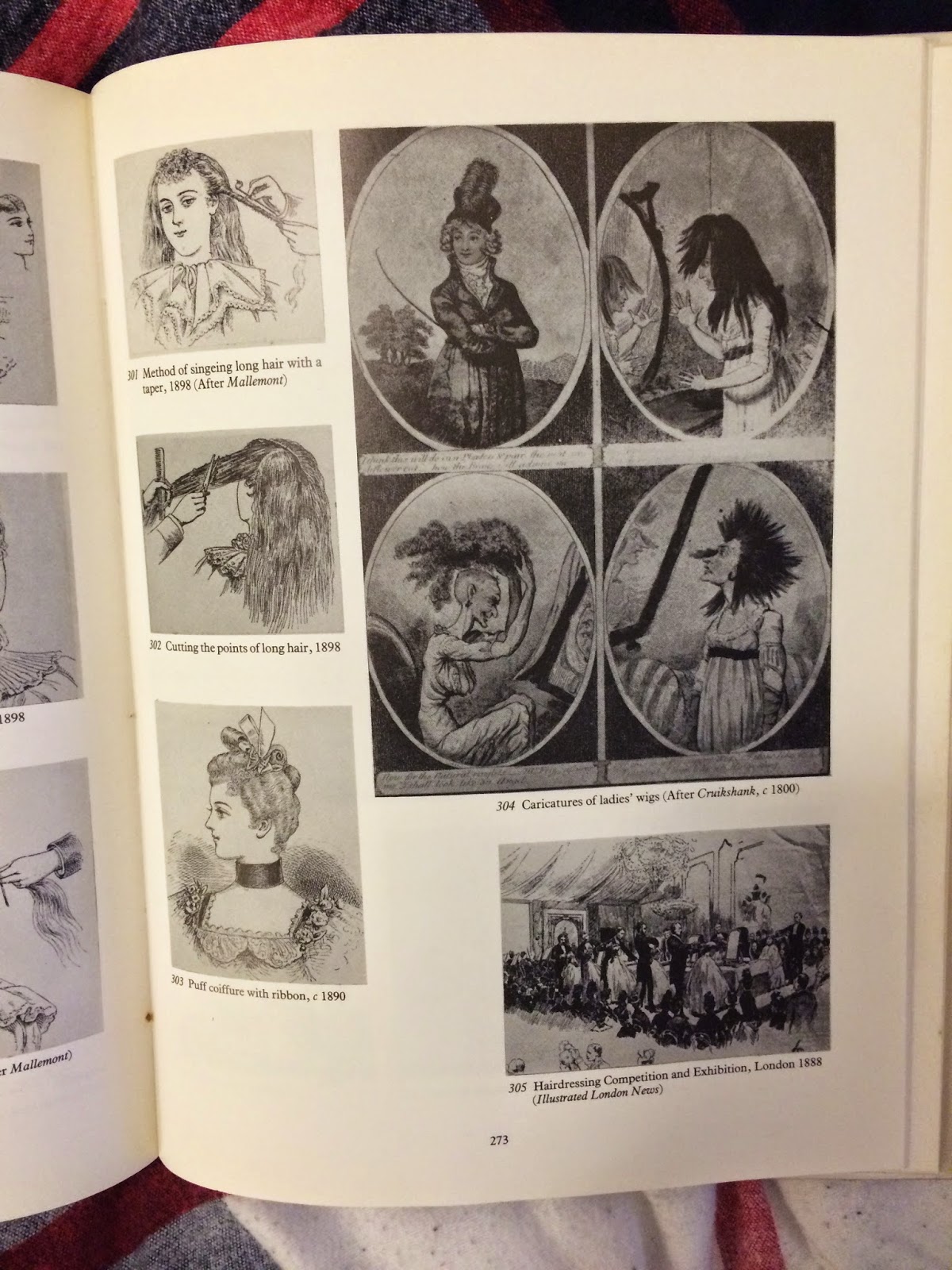Miss Havisham
When I read the book, my first impression of Miss Havisham was that she is a wealthy, eccentric old lady who lives in a rotten, unkept mansion. But when you analysis her properly she is a lot more than that, we start to understand her as a character.
Miss Havisham never recovered from her heartbreak after her fiancé didn't turn up on their wedding day. She is obsessed with her past; all clocks have stopped at 8:40 (the time she was jilted), the wedding table is still set with all mouldy food on it, and she is still wearing her wedding dress which is now "withered". Miss Havisham invites Pip to her house so Estella can practice in manipulating men, she tells Estella that she can break Pip's heart. When Pip falls in love with Estella, Miss Havisham is thrilled as she wants him to get hurt. Her passionate need for revenge ruins her life, and damages Pip and Estella.
She does finally change her ways, after realising she's hurt Pip she asks for his forgiveness. She understands that she has made Pip suffer the way she has and she feels guilty. Her regret makes us as readers feel sorry for her, rather than blame her for what she's done.
 |
| 1967 1998 2011 2012 |
http://i.telegraph.co.uk/multimedia/archive/02063/anne-bancroft-1998_2063146i.jpg
http://i.telegraph.co.uk/multimedia/archive/02063/Gilian-Anderson5_2063010i.jpg
http://i.telegraph.co.uk/multimedia/archive/02063/Bonham-Carter_2063039i.jpg
Emotions:
There are probably many emotions that Miss Havisham has experienced such as heartbreak, anger, jealousy, revengeful and abandoned. All of these will have an impact on her behaviour and even her appearance. I want to portray a few, if not all, of these emotions in my character design.
Living conditions:
There would have been no electricity, gas, lighting or running water meaning that the house would be cold and dark. They wouldn't have been able to wash themselves, their hair, or even brush their teeth so as you can imagine they would have smelt pretty bad! They had big fires which would spit out coal and soot and the candles were made out of fat which, when burned, would smell and stain. No one would have cleaned the house, it would be filthy dirty and a surface of grime. In that era, there were no toilets so it would have been done in a pot in the corner of the room and emptied twice a day. The windows weren't opened so the smell would be trapped in the house.
There are many ways that Miss Havisham can be fleshed out in production such as her mannerisms, her background, her emotions etc which is why I have created a brainstorm of ideas, covering these areas to give me a better understanding of her character and how I want her to be portrayed. I'm unsure whether I would like to stick to the traditional Miss Havisham or create a more contemporary/younger version of her. I have started to create face charts to help me with developing my ideas.
Miss Havisham is often thought of as an old lady, I wanted to see how a traditional look turned out with all the elements of the book and the way she is described. I quite like it, however I want to create something a bit more unique and different as I feel that Miss Havisham has always been portrayed like this.
So here I have created a more modern day Miss Havisham, I have made her a lot more younger but I have still kept some traditional features about her. I wanted this to have some elements of Dickens description, but with a twist. In the book, Dickens refers to Miss Havisham as having "sunken eyes" so I have made her eyes very dark and heavy, I have also decided to contour her face so that you can see her cheekbones as she has "withered" like her dress. As mentioned previously, I am terrified of spiders so I have made her eyelashes look like individual spiders legs and I got my inspiration from a very strange lady...
Images and information from: http://indulgencesandwhims.blogspot.co.uk/2011_05_01_archive.html
When I first saw this picture I was amazed at how creepy but cool these eyelashes looked, until I found out that they were REAL fly's legs. British artist Jessica Harrison dismembers flies and uses there legs to make fake eyelashes. I won't be using these on anybody so I decided to create my own version, using only mascara!
I put on my mascara as normal but I added a lot more coats to what I would usually put on, to make them thicker. I then used a comb and started to brush my lashes in all directions and I used my fingers to bend the tops of them to create a flies leg look. I am quite pleased with how they have turned out, I want to experiment with other ways incase I find an alternative that works much more better.
Because of her obsession with the wedding, I am certain that I want to include a veil in any of my hair designs. I think it adds to the character and add a lovely finish to the photographs. I know for a fact that I want her to have messy dropped out hair from where she has left it in on her wedding day.
Because of her obsession with the wedding, I am certain that I want to include a veil in any of my hair designs. I think it adds to the character and add a lovely finish to the photographs. I know for a fact that I want her to have messy dropped out hair from where she has left it in on her wedding day.
Miss Havisham is obsessed with her past so I want to create a character who is obsessive and over the top, such as showing how obsessed she was with the wedding and stopping her life completely at that time but living on as her body is slowly dying. My overall character design will hopefully be recognisable to my potential audience, I want people to look at her and know who she is, but I also would like them to feel like my work is slightly different. I would like people to see that I have taken into consideration every aspect of her life and showed that through my character.

















































